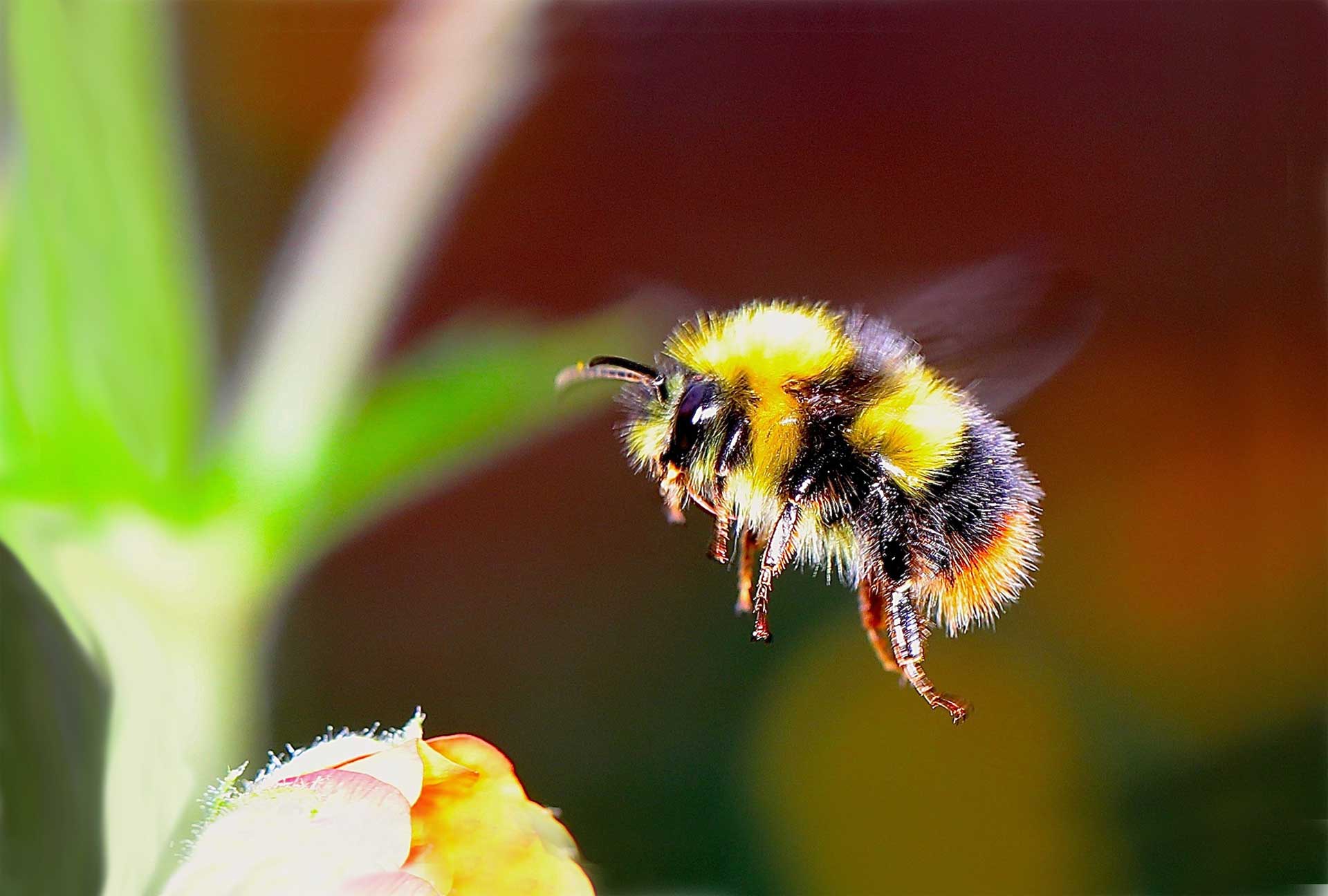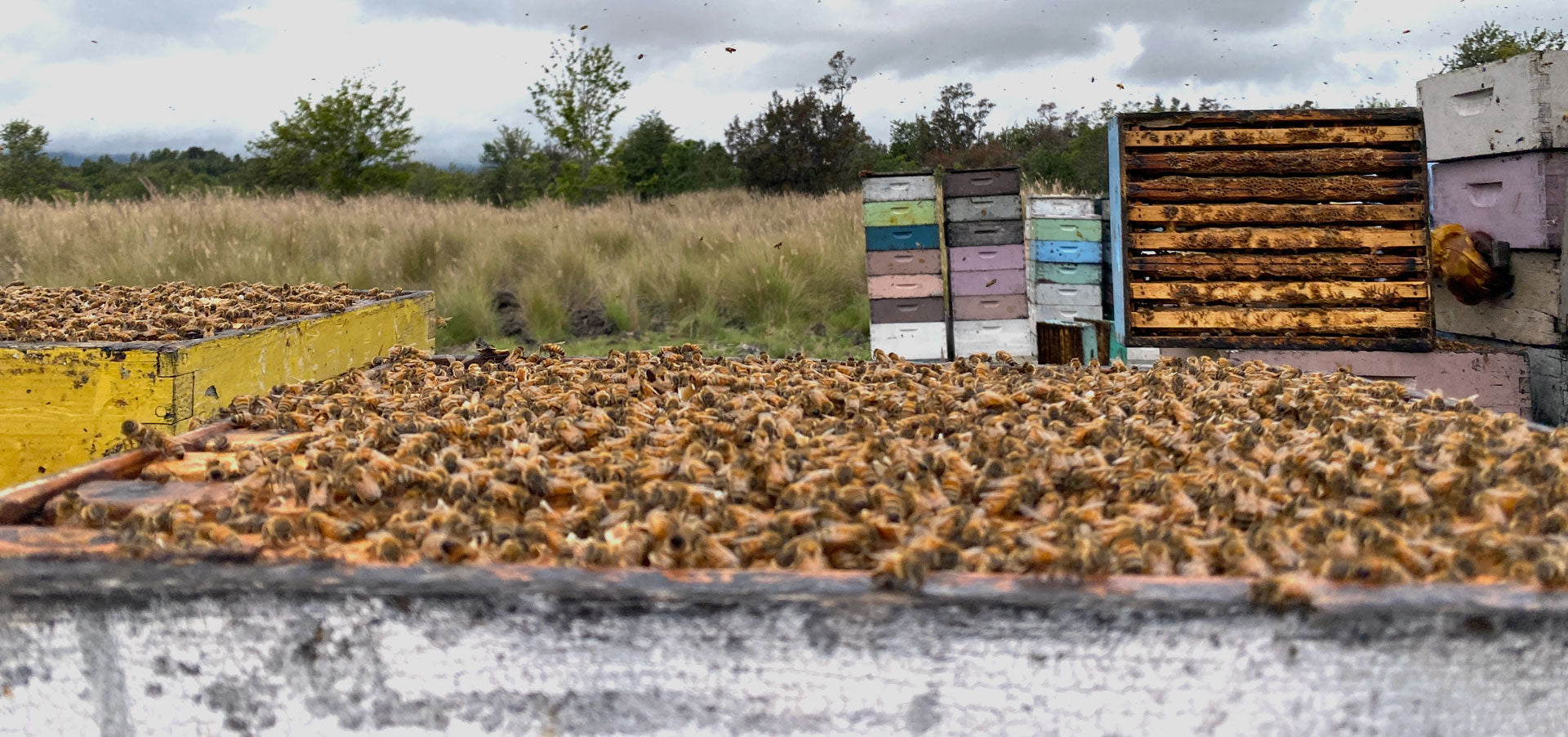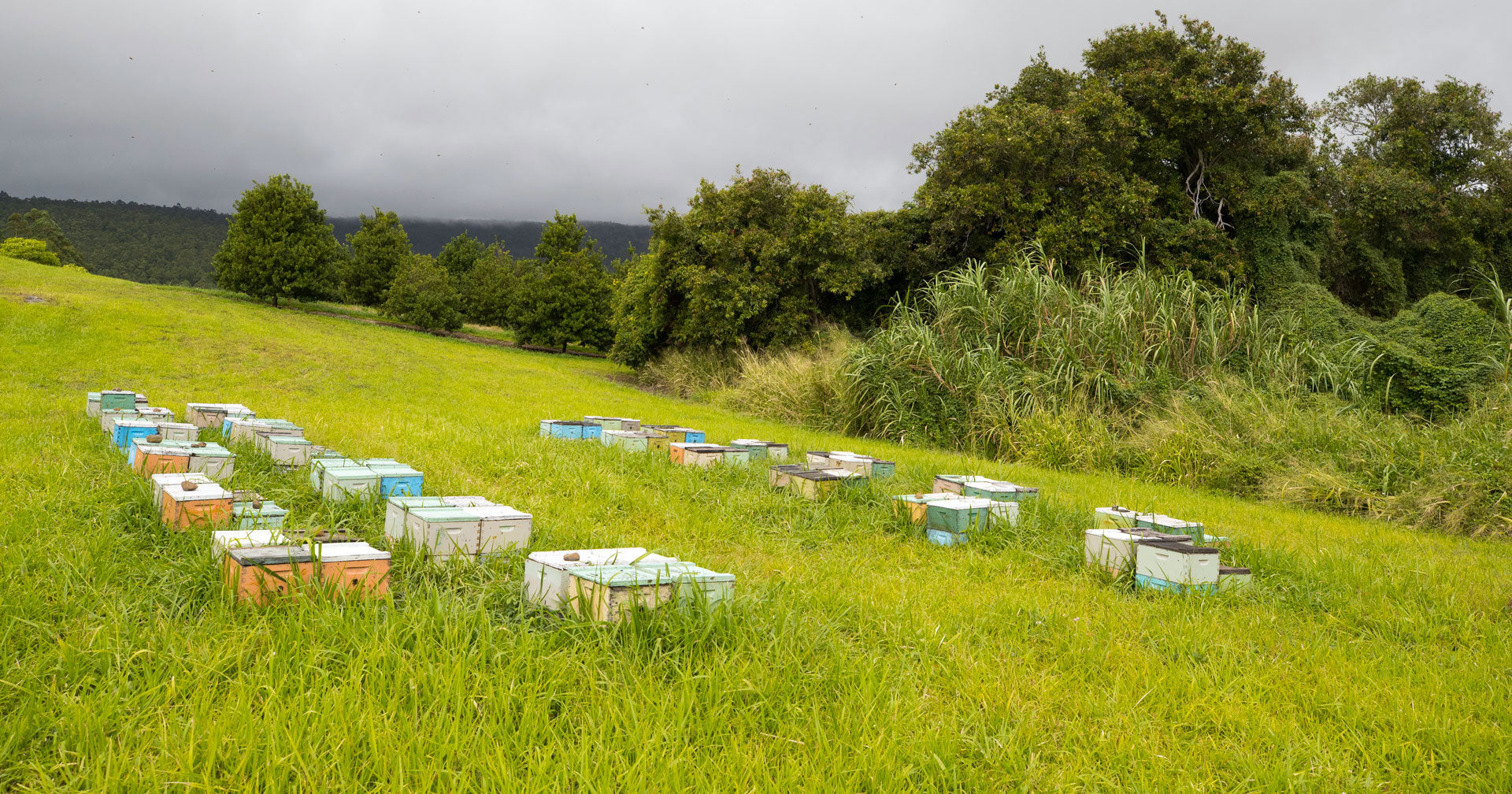The word is out: bees are in trouble. Colony collapse disorder, population decline, risk of extinction and the threat to our food production are all too-familiar headlines urging us all to take action to save the bees. Many people interpret this as a call to become backyard beekeepers and attempt to support bees in their yard with a human-made hive. Perhaps, you've felt this pull to save the bees yourself and wondered if there’s another way. The answer is a resounding "Yes!"
In fact, the domesticated bees we manage (take care of) to make honey are not actually the bees that need saving. The bees that are being threatened the most by loss of habitat, climate change and chemical pesticides and herbicides are the bees that are already in your backyard (see "Native vs Wild vs Honey Bees" for more info). And fortunately, there are several easy and straightforward steps you can take to help keep your local wild bees healthy and thriving.
How Can I Save the Bees?
Despite our tendency to associate the word bee with the European Honey Bee, there are over 20,000 bee species (and counting)—many of which don't even make honey! (Read more on this here: “Do All Bees Make Honey”) Indeed most bee species are native bees and helping them means actively supporting the natural things they need to stay alive: food, water, and shelter. Even just a little undisturbed green space around you means you're well on your way to helping to save the bees and other important pollinators.
It's All About The Bees' Knees Needs
Native bees are wild animals that can take care of themselves in the right habitat. Unfortunately that’s where the problem lies. Like many animals, bees are facing habit destruction and other threats resulting in them having a harder time finding an adequate environment to sustain themselves. With over 30 million acres of land being used for lawn in the United States—more surface area than is used for irrigated corn or wheat1—ensuring that the wild bees in your backyard have access to the resources they need and protecting them from the harmful things they don’t (like pesticides and herbicides) is an important step we can all take.
If you’re interested in making your lawn more bee-friendly, you have come to the right place. We have a lot of tips to share on ways you can transform your garden into a bee-friendly habitat—ranging from minimal effort to a total bee sanctuary.
Tips for Creating a Pollinator-Friendly Yard
The Basics
As we mentioned earlier, creating a bee-friendly habitat in your landscape simply means providing the appropriate resources for the bees native to your area. No matter the scale of your effort, you can follow these basic recommendations.
Step 1 – Provide a Natural Food Source
Bees eat pollen and nectar from flowers. Perhaps the most obvious step in creating a pollinator-friendly lawn is to plant a variety of flowering plants that bees love.
- Native Plants: The best choice for native bees are plants that are also native to your area. Plants that have already adapted to the local climate and soil conditions will require fewer pesticides, watering and maintenance than imported plants or turf and will provide a recognizable food source and habitat for your local pollinators.
- Common Plants: Culinary herbs are delicious and many of them attract pollinators, making it a win-win. Rosemary is a great example.
- Weeds and Wildflowers: In some cases you may already have a great food source for bees that you merely need to let grow. Plants like dandelion and clover are a fantastic food source for the native bees around you. Choose to mow less frequently to allow these naturally growing plants to bloom and watch them attract our beloved pollinators.
Step 2 – Ensure Access to Clean Water
Just as you might provide a bird bath for birds, so too can you offer water for bees. Drought-prone bioregions, in particular, can benefit from a fresh water source, but placing a clean water source near a food source in a bee-friendly area will help the bees easily and safely stay hydrated in any region.
- Fountains or Existing Bird Baths: a water feature in your yard can be a good water source for bees as long as you include stones or pebbles for them to stand on so they don’t drown!
- Bowls of Water: In order to keep the mosquitos away, you’ll want to change them daily, but this can be a simple way to ensure bees have enough water. Elevating them with a stand or stone to the level of the flowers will help keep it clean and away from other critters.
- Alternative to Pool: If you have a swimming pool, surely you are familiar with the regrettable experience of fishing dead bees out of the water. This is a clear sign that the bees in your backyard need access to a better—easier—source of water. Keep the bees in their habitat by providing shallow pools of water closer to their food source.
Step 3 – Keep Shelter Available
Again, most bees do not live in a hive or even in groups. The majority of species are solitary and create shelter in various places outdoors. Oftentimes, the more pristine yards in urban environments lack options for bees, so it's up to us to provide them with options. Here are some simple bee-friendly nesting options.
- A Crack in a Rock: Something as simple as a rock with a crack in it can be an excellent place for a nest and, all the more, if positioned close to a food and water source.
- A Hollowed-Out Log: Bees love them! Any woody debris or even garden stakes can become a home for a cavity-nesting bee. Just remember to leave them in place once the bees make it their home.
- A Pile of Leaves: Leaf litter is a common spot for bees that nest, particularly in the fall and winter when we are all so accustomed to tidying up our yards full of fallen leaves. If you take the time to build a garden for pollinators in the spring, be sure to help those bees make it through the winter by keeping a layer of leaves undisturbed.
- A Designated Area of Ground: Many bees will burrow directly into the ground or planter or even inside the stem of a plant. Choose an area with low foot traffic to build your bee oasis so that when they do nest, you can leave their homes in-tact. If you do need to dig or prune, you can visually check for nests and mark them so you can avoid the area—look for a series of tiny round holes in the dirt or capped holes in the stems.
DIY or Finding Help
Depending on the scale of your project, you might need additional guidance to choose the specific flower varieties or design for your space. Whether you just need a bit more information to do it yourself or prefer to hire an expert, we have some additional resources to check out as well as some cases in point to share.
It is important to note that bees have evolved to be very tailored pollinators, sometimes only pollinating one type of flower, as in the case of the blueberry bee. Your bioregion and local climate will determine which specific plants are the best to plant, whether water resources are scarce and what specific types of nesting locations your native bees prefer.
Seed and Plant Resources:
- Your local nursery is a great starting place for information about native varieties in your area and possibly pollinator preferences too.
- Search for seeds by region of the country you are in at this website: https://www.americanmeadows.com/wildflower-seeds
- See what’s growing in your local wilderness area. CASE IN POINT: We were intrigued by the creativity of a true enthusiast who visited us from Idaho. Throughout his life, he gathered native flower seeds while hiking in the wilderness near his home. Each time he gathered seeds on a hike, he would throw them randomly in several places in his yard and wait and see what happened. His method was a little more hands-off, but incredibly, his lawn was used as an example of native lawn for his State Botanical Garden!*
*Some protected areas do not permit any form of tampering with a local ecosystem, so check with your local law to determine if this is a viable option for you.
Financial Incentives:
- Nativescapes are often xeriscapes due to the lack of watering requirements of native plant varieties and could reduce your water bill if used in place of water-guzzling landscaping.
- You might be lucky enough to live in an area with a local water-saving initiative that could help you pay for your bee-friendly landscape. Check with your local water department or municipality for details. CASE IN POINT: A man who visited Big Island Bees from Los Angeles transformed his lawn into a native xeriscape yard over the course of a few months. For his efforts, his water department reimbursed all the money he put into the project, which was over two-thousand dollars . This California-based program is called Cash for Grass.
Long-term Landscape Architecture Planning:
- Hire a professional landscape architect to plan the best use of your space for you and the pollinators. Search your local directories or talk to your local nursery for a referral.
- Study up further on bee-haviors and pollinator habitats to help you plan your project. A great place to find science-based information on all pollinators and more is the Xerces Society for Invertebrate Conservation: https://xerces.org/
- Bee patient! Planting for pollinators can take years to complete your vision. Don’t limit yourself to groundcover and shrubs. There are many trees and even food-producing crops that may be native to your area or even if not native can still be good for local bees. CASE IN POINT: Another visitor to our farm was a guest from Colorado who hired a landscape architect to transform her lawn into a native pollinator-friendly ecosystem. Though she planted all of this last year, it is projected that over the next 3-5 years, all of those trees and bushes will be significant inputs for the local pollinators of her area, birds and bees alike.
Spreading Awareness
Another essential step we can take to help bees survive is by spreading awareness—recruiting our neighbors to create bee-friendly spaces too is just as important as the effort in our own yard. You can start by telling them about your own yard and explaining why it might not look quite as tidy. You might even decide to post a “pollinator habitat” sign near your leaf litter to spark interest.
It might also be useful to arm yourself with answers to common questions you might need to yield. Here are a few pointers to help you prepare.
Is it safe?
Before inviting more bees to thrive in the backyard, some people may be cautious of their safety. The wonderful thing about bees is that, overall, they are not aggressive. Though some bees have a stinger, they will only use it when sensing a threat, particularly against their hive, and are very unlikely to sting you while they are out foraging unless you are handling or poking them. You may be surprised to find out that many bee species don't even have a stinger! (Learn more about stingless bees here.) If your neighbors are still uneasy, you might tell them that by providing an adequate food source in a less occupied area in their yard, the bees will actually be less likely to bother them elsewhere.
Is mowing really hurting the bees?
We understand that mowing is important to keep a yard tidy and prevent overgrowth (and some communities require it). However, the frequency of mowing matters! Naturally occurring plants like clover and dandelion can blossom quickly in your yard and attract early pollinators with their inflorescence. Skipping just the month of May is a tradition called "No Mow May" and will help to feed pollinators at the end of spring.
What about other insects?
Planting for bees will likely attract other welcome pollinators as well, such as butterflies. It’s understandable that there might be concern that leaf litter or woody debris might provide shelter for unwanted pests, however. Carefully planning your landscape can minimize this problem by ensuring that the area is far enough away from your home or where your children play. In general, the insects that live alongside bees are part of an ecosystem that feeds the birds and other animals you might enjoy at different times of the year.
I don't have a yard. Can I still help save the bees?
Even if you don't have a green space, you can still help the bees. If you see bees outside your home, they are likely looking for food and water and would welcome even some clustered potted plants. Supporting organizations that save the bees through volunteer time and donations is another way to get in on the action.
How do I protect bees from herbicides and pesticides?
Unfortunately, these harmful chemicals are not selective and our use of them is harming and killing bees and other pollinators. Choosing native plants that require fewer pesticides and avoiding sprays altogether is a vital step toward saving bees. Try using non-toxic, bee-friendly solutions like traps or manually tending to your garden to control pests.
Bee a Habitat-Keeper
As you can see, there are countless ways that you can support bees in your backyard without becoming a beekeeper. You can make a difference right away with something as simple as not mowing in May or as complex as redesigning your yard and turning it into a bee-haven. Before long, you'll enjoy seeing happy, thriving pollinators and feel great about being part of the solution. Then, you can tell your friends and tell your neighbors. Advocating on behalf of the bees in your area is a great way to strengthen your impact!
1https://earthobservatory.nasa.gov/features/Lawn/lawn2.php
Joe O'Brien, the author of this post, is our Senior Bee Docent and is known for his enthusiasm for and knowledge about all things bees. If you ever find yourself on the Big Island in Hawaii, he'd love to show you more about bees with an up-close and personal look into a beehive on our Beekeeping Tour!
Big Island Bees is an artisanal producer of three unique Hawaiian honey varietals. Our honey is raw and unfiltered and we tend to our own hives with deliberate care for the health of the bees and environment – without the use of chemical miticides or artifical feeds. We have proudly been the first place recipient of the Good Foods Awards in 2021 and 2022 in the honey category.



